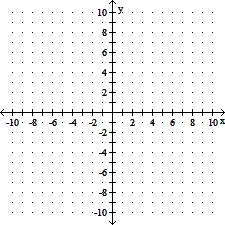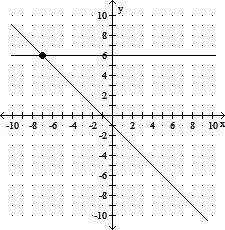Use the given graph to find the x-intercepts and zeros of the function.
A. (4, 0), (1, 0); 4, 1
B. (-4, 0), (-1, 0); -4, -1
C. (-4, 0), (1, 0); -4, 1
D. (-1, 0), (4, 0); -1, 4
Answer: D
You might also like to view...
Determine graphically the x-value when y = 6 in the given equation.y = -1 - x
A. 7;
B. -5;
C. 5;
D. -7;
Add or subtract as indicated. You will need to simplify terms to identify like radicals.-2 + 6
+ 6 + 7
+ 7
A. -2
B. -3
C. 52
D. 3
Write the expression with only positive exponents. Assume all variables represent nonzero numbers. Simplify if necessary.r-7
A. r1/7
B. -r7
C. - 
D. 
Sketch a graph of a single function that has these properties.a) Continuous and differentiable for all real numbers b) f'(x) > 0 on (-3 , -1) and ( 2 , ?) c) f'(x) < 0 on (-?, -3) and ( -1 , 2) d) f"(x) > 0 on (-? , -2) and ( 1 , ?) e) f"(x) < 0 on (-2 , 1) f) f'(-3) = f'(-1) = f'(2) = 0g) f"(x) = 0 at (-2 , 0) and (1, 1) 
What will be an ideal response?